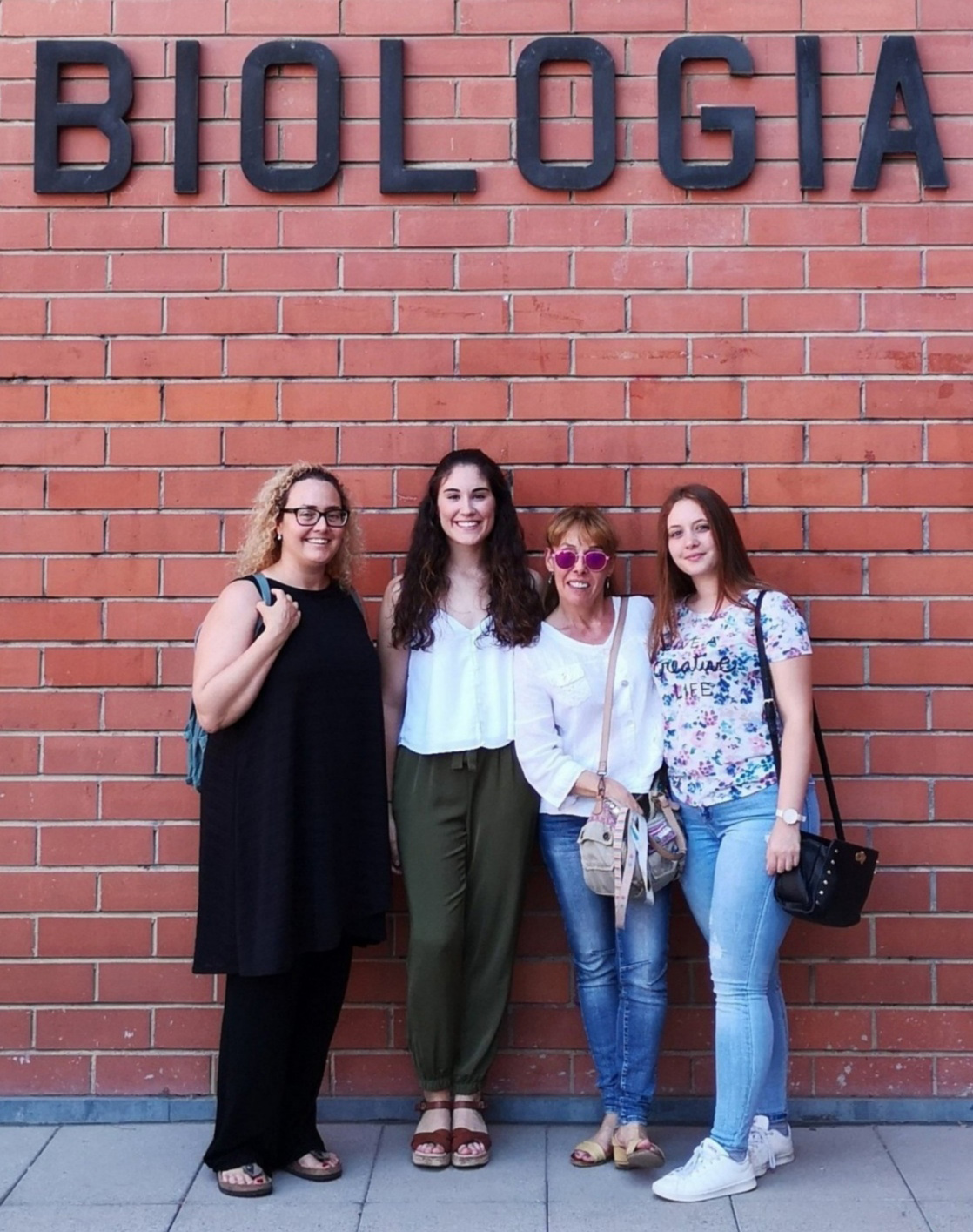Dc. Estebanez Group
Molecular Structure of Nuclear Receptors
Dc. Eva Estébanez-Perpiñá
Contact:
Eva Estébanez-Perpiñá has a PhD in Biochemistry from the Max-Planck-Institute fuer Biochemie (MPI) and the Autonomous University of Barcelona, under the supervision of Nobel Prize Laureate Robert Huber and Wolfram Bode. In 2009, after her postdoctoral training in the group of Robert J. Fletterick in collaboration with John D. Baxter in UCSF (San Francisco, California, she joined the Institute of Biomedicine of the University of Barcelona (IBUB) and the Department of Biochemistry and Molecular Biomedicine at the School of Biology from the University of Barcelona as a research group leader. Her research is focused on the structural and molecular determinants responsible for nuclear receptors functions such as ligand binding, coregulators recognition, and their physiopathological actions in prostate cancer and brain tumors. Her work has demonstrated the relevance of developing allosteric modulators of nuclear receptors, having identified the first druggable allosteric pockets on these transcription factors as well as having resolved first crystal structures of non-canonical dimers of the androgen, glucocorticoid and thyroid receptors.




About Us
- Eva Estébanez-Perpiñá, PhD
- Profesora Agregada Serra Húnter – Universidad de Barcelona
- Pablo Fuentes-Prior, PhD Research Associate
- Alba Jiménez-Paniño, PhD, Postdoctoral Fellow – Universidad de Barcelona & NIH
- Andrea Alegre-Martí, Predoctoral researcher
- Montserrat Abella Monleón, Technician

What Do We Research?
We combine structure-based drug design, combinatorial chemistry, and bioinformatics to identify novel first-in-class AR precision drugs against prostate cancer and other AR-related diseases such as spinal and bulbar muscular atrophy or androgen insensitivity syndromes. Our studies on GR or AR oligomerization focuses on the development of novel glucocorticoids or antiandrogens devoid of severe side effects that modulate GR or AR multimers on chromatin. We also design TLX modulators to tackle incurable brain tumors such as glioblastoma multiforme.
Publications
-
Alegre-Martí A, Jiménez-Panizo A, Martínez-Tébar A, Poulard C, Peralta-Moreno MN, Abella M, Antón R, Chiñas M, Eckhard U, Piulats JM, Rojas AM, Fernández-Recio J, Rubio-Martínez J, Le Romancer M, Aytes Á, Fuentes-Prior P, Estébanez-Perpiñá ESci Adv. 2023 Mar 17;9(11):eade2175
-
Jiménez-Panizo A, Alegre-Martí A, Fettweis G, Abella M, Antón R, Tettey T, Schiltz RL, Johnson TA, Nuñez-Barrios I, Font-Díaz J, Caelles C, Valledor AF, Pérez P, Rojas AM, Fernández-Recio J, Presman DM, Hager GL, Fuentes-Prior P, Estébanez-Perpiñá ENucleic Acids Res. 2022 Dec 9;50(22):13063-13082.
-
Paredes A, Justo-Méndez R, Jiménez-Blasco D, Núñez V, Calero I, Villalba-Orero M, Alegre-Martí A, Fischer T, Gradillas A, Rodrigues Sant’Anna VA, Were F, Huang Z, Hernansanz-Agustín P, Contreras C, Martínez F, Camafeita E, Vázquez J, Ruiz-Cabello J, Area-Gómez E, Sánchez-Cabo F, Treuter E, Bolaños JP, Estébanez-Perpiñá E, Rupérez FJ, Barbas C, Enríquez JA, Ricote M2023 May 24 Online ahead of print.
-
Nadal M, Prekovic S, Gallastegui N, et al, Claessens F, Fuentes-Prior P and Estébanez-Perpiñá ENat Commun. 2017 Feb 6;8:14388.
-
Kandel P, Semerci F, Mishra R, Choi W, Bajic A, Baluya D, Ma L, Chen K, Cao AC, Phongmekhin T, Matinyan N, Jiménez-Panizo A, Chamakuri S, Raji IO, Chang L, Fuentes-Prior P, MacKenzie KR, Benn CL, Estébanez-Perpiñá E, Venken K, Moore DD, Young DW, Maletic-Savatic MProc Natl Acad Sci U S A. 2022 Mar 29;119(13):e2023784119.
- Topological dynamics of an intrinsically disordered N-terminal domain of the human androgen receptorVahid Sheikhhassani, Barbara Scalvini, Julian Ng, Laurens Heling, Estébanez-Perpiñá E, Iain J. McEwan, Alireza MashaghiProtein Sci. 2022 Jun;31(6):e4334.
-
de Bosscher K, Desmet J, Estébanez-Perpiñá E, Brunsveld LNat Rev Endocrinol. 2020 Jul;16(7):363-377
-
Fuentes-Prior P, Rojas A, Hagler AT and Estébanez-Perpiñá ETrends Biochem Sci. 2019 Jan;44(1):2-6.
-
Sevilla L, Pons O, Alegre A, Estébanez-Perpiñá E, Vitellius G, Pérez PFASEB J. 2023 Jan;37(1):e22709.
-
Font-Díaz J, Jiménez-Panizo A, Caelles C, Vivanco MD, Pérez P, Aranda A, Estébanez-Perpiñá E, Castrillo A, Ricote M, Valledor AFSemin Cancer Biol. 2021 Aug;73:58-75.




